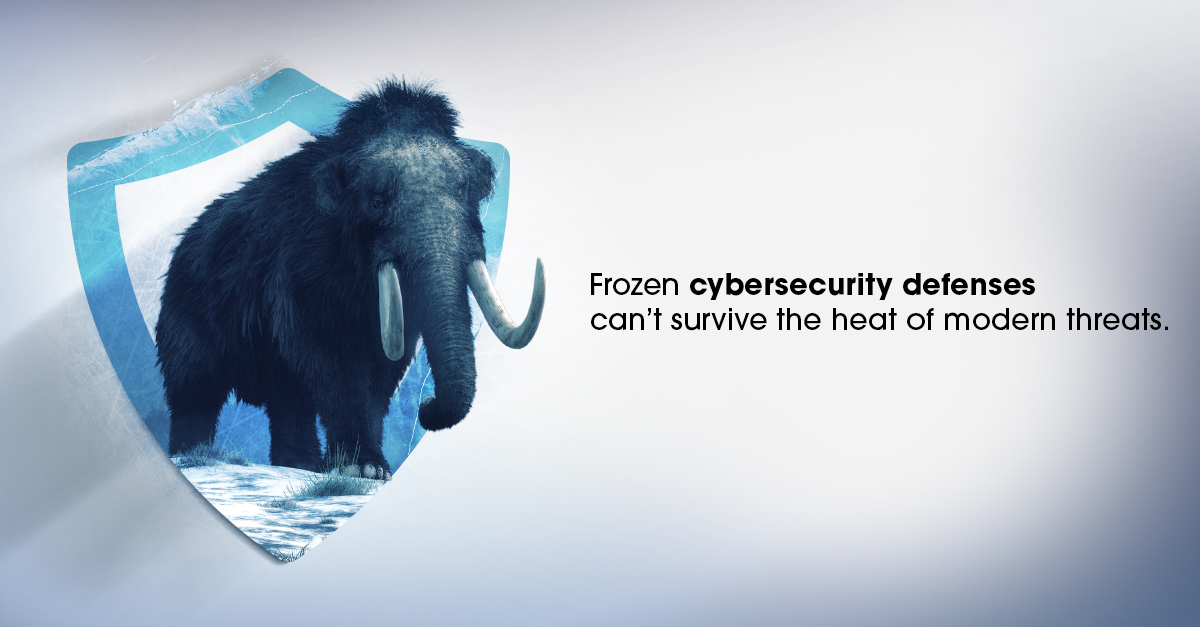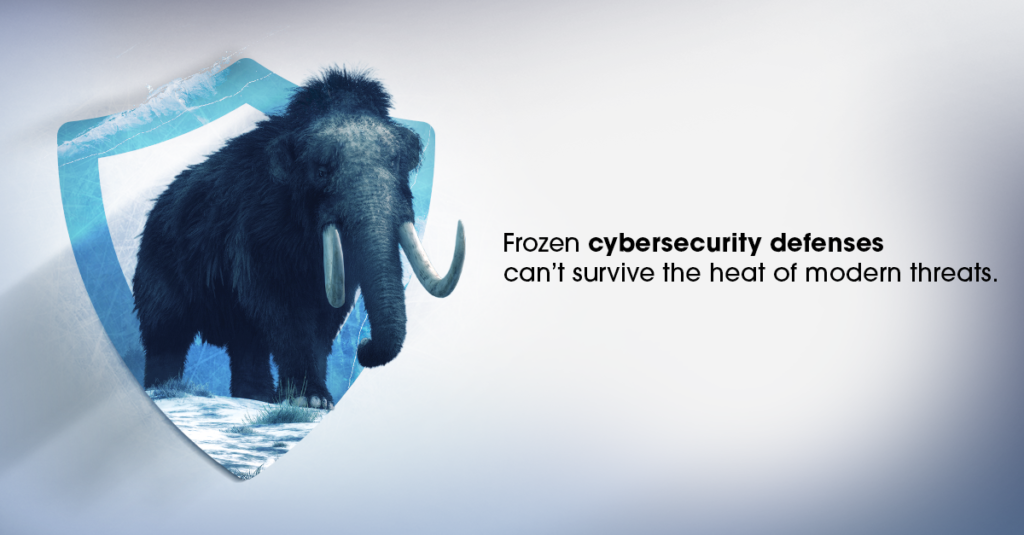Joe Popper
/ September 22, 2025
7 Extinction – Level Cybersecurity Threats

The dinosaurs never saw their end coming. The same is true for businesses that don’t understand what an extinction-level cyberthreat can do to their business and its future.
Cyber incidents have become routine, and all businesses, regardless of their size, are at risk. From AI-powered ransomware to supply chain compromises, today’s cybersecurity threats are smarter and harder to predict. What’s even scarier is that they’re evolving faster than traditional defenses can keep up.
In this blog, we’ll break down the top extinction-level cyberthreats every business leader should know. You’ll gain the clarity and insight you need to make smarter security decisions and stay one step ahead of what’s coming next.
The threat landscape: What you’re up against
Not all cyberthreats are created equal. Some are disruptive, but others can incapacitate your business entirely. These are extinction-level events, and they demand serious attention. AI-powered ransomware For cybercriminals, ransomware is a profitable enterprise, and with AI, they can do more harm than before. Gone are the days when attackers would cast their nets wide, trying to bait anyone who would fall for their scam. Today’s scams are highly sophisticated. Cyber criminals now use AI to analyze targets, identify weak points and lock down entire networks in hours. Why it matters for leaders: With AI, cybercriminals can launch complex attacks at lightning speed, faster than human teams can detect or respond. The result? Disrupted operations, lost revenue and damage to your reputation and customer trust Advanced Persistent Threats (APTs) APTs are silent operators. They infiltrate systems and quietly observe for weeks or months, collecting valuable data before making their move. Often, APTs are launched by organized criminal syndicates or nation-states, which means they have the resources and patience to wait for the perfect moment to strike. Why it matters for leaders: APTs undermine trust. They can stay silent and quietly steal sensitive client data, intellectual property or trade secrets without you even realizing it until the damage is permanent. Supply chain attacks Supply chain attacks exploit the fact that businesses are all inter connected. You might have strong internal security, but what about your vendors, software providers or partners? One weak link in your ecosystem can open the door to an extinction-level threat. Why it matters for leaders: Your business security is only as strong as its weakest link. It’s no longer enough to secure just your network; it’s equally important for you to know how your partners protect theirs. Data breaches A data breach isn’t just a security incident; it’s a trust crisis. Breaches often start with something as simple as a weak password, a misplaced laptop or an employee falling for a phishing email. Attackers can use these vulnerabilities to access customer records, financial information or employee data. Why it matters for leaders: The aftermath of a breach is costly. Regulators impose fines, customers walk away and your competitors can use the incident to gain an edge while you scramble to recover from the security event. Internet of Things (IoT) exploits Smart IoT devices make life easier, but they also open the door to cyber attacks. From cameras to printers, many connected gadgets have weak security settings and are rarely updated, making them easy targets for criminals looking to infiltrate your network. Why it matters for leaders: IoT devices are part of your workplace environment. Without visibility into IoT devices, businesses can become easy targets and attackers can exploit the hidden vulnerabilities to launch a company-wide breach. Deep fakes and social engineering We are moving into a world where, at times, we can’t trust our eyes and ears. Deep fakes and AI-driven scams make it easier for attackers to impersonate senior leaders, employees or partners. Criminals can use a convincing video call or voicemail to trick you into revealing critical company information. Why it matters for leaders: As deep fake scams become more convincing, you’ll have to move beyond employee training. Policies and processes will have to evolve so that a convincing voice or video alone isn’t enough to authorize critical actions. Cloud misconfigurations The cloud has changed a lot of businesses. While it brings flexibility, it also brings risks. Simple mistakes like misconfigurations or permissions set too broadly can expose sensitive data to anyone who goes looking. A single mistake can land all your critical data in the wrong hands within hours. Why it matters for leaders: Moving to the cloud doesn’t absolve you of your responsibilities; rather, it calls for increased monitoring. Misconfigurations are one of the easiest attack vectors for criminals, making regular cloud audits and automated safeguards essential to your defense.Survival belongs to the prepared
Your business operates in a landscape where extinction-level threats aren’t science fiction. They are a real and growing danger for which we must all prepare. The difference between businesses that fall and those that thrive often comes down to preparation. The good news is you don’t have to face these threats on your own. By leaning on a trusted IT partner like us, you gain:- A clear view of your vulnerabilities
- Proactive monitoring that stops threats before they escalate
- Tested backup and recovery strategies that minimize downtime
- Strategic planning to ensure your tech evolves with the threat landscape



